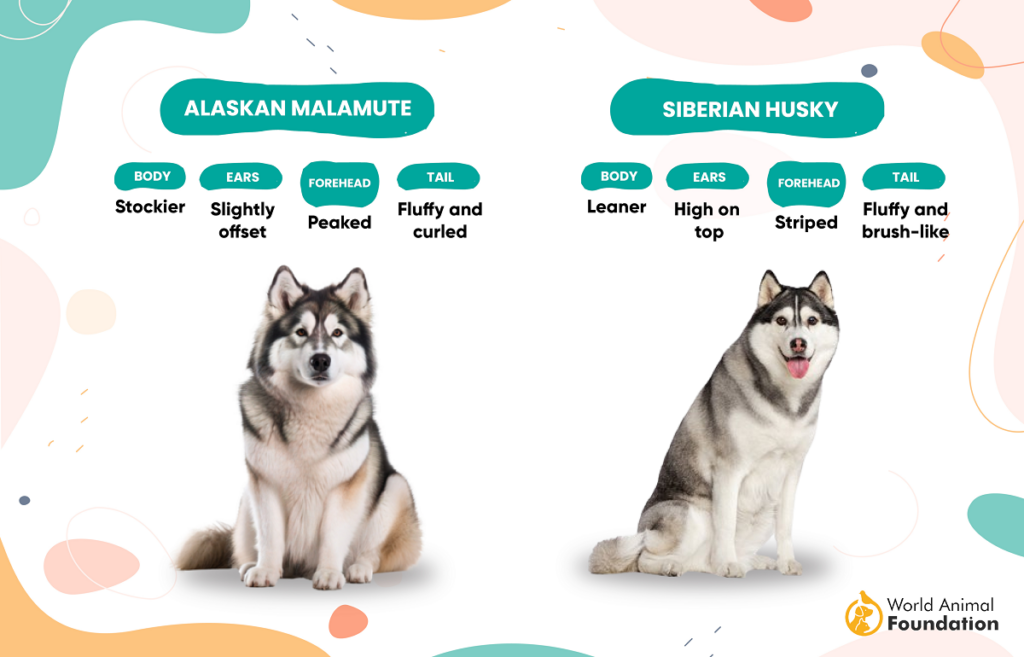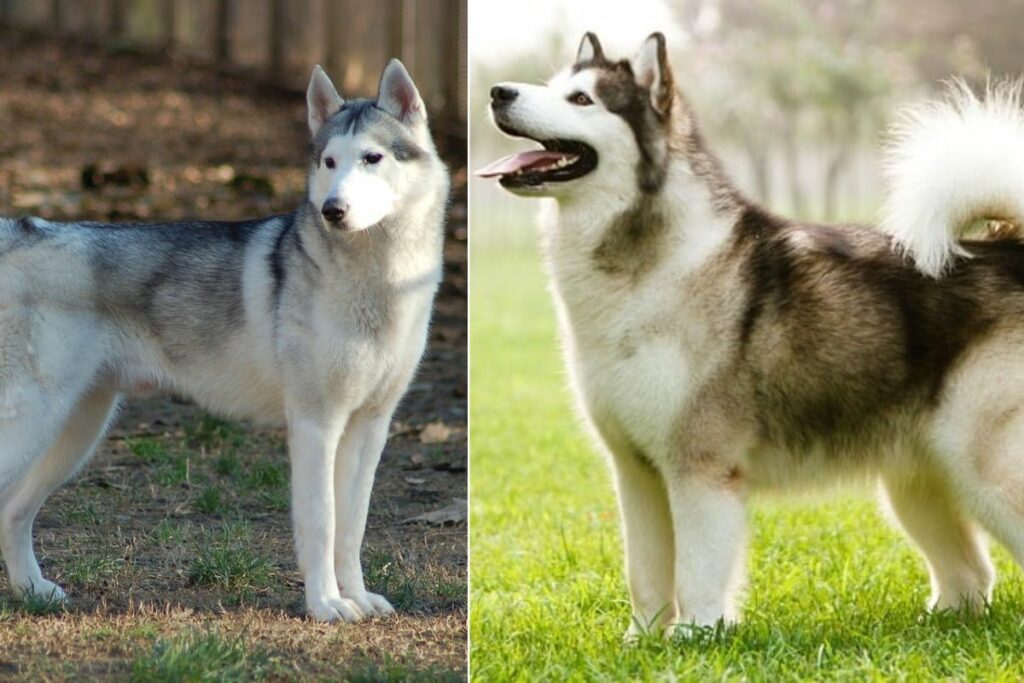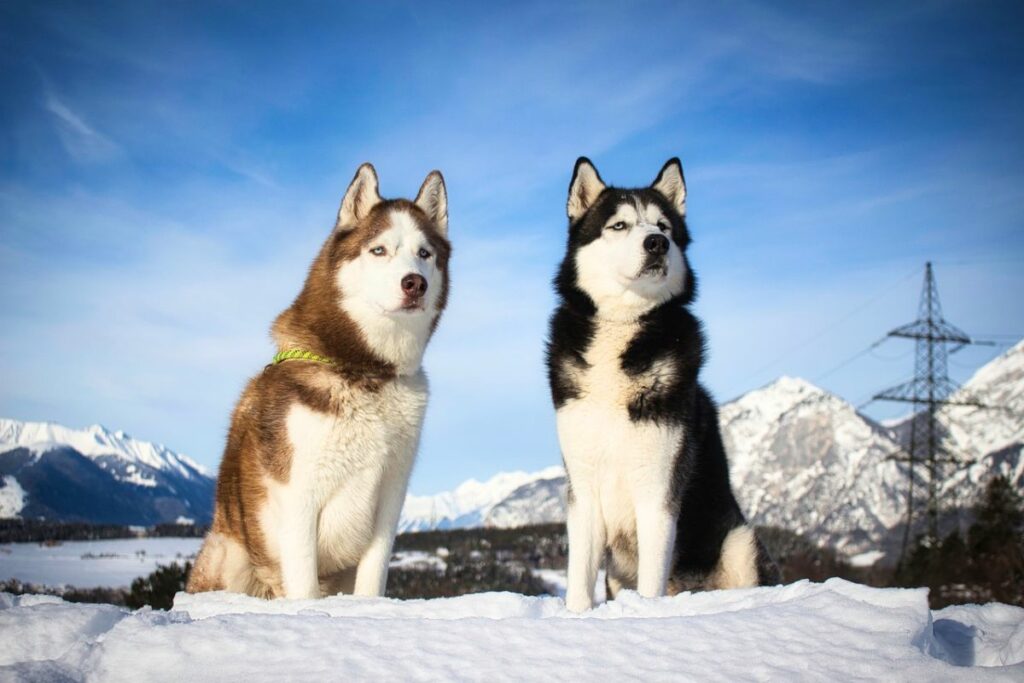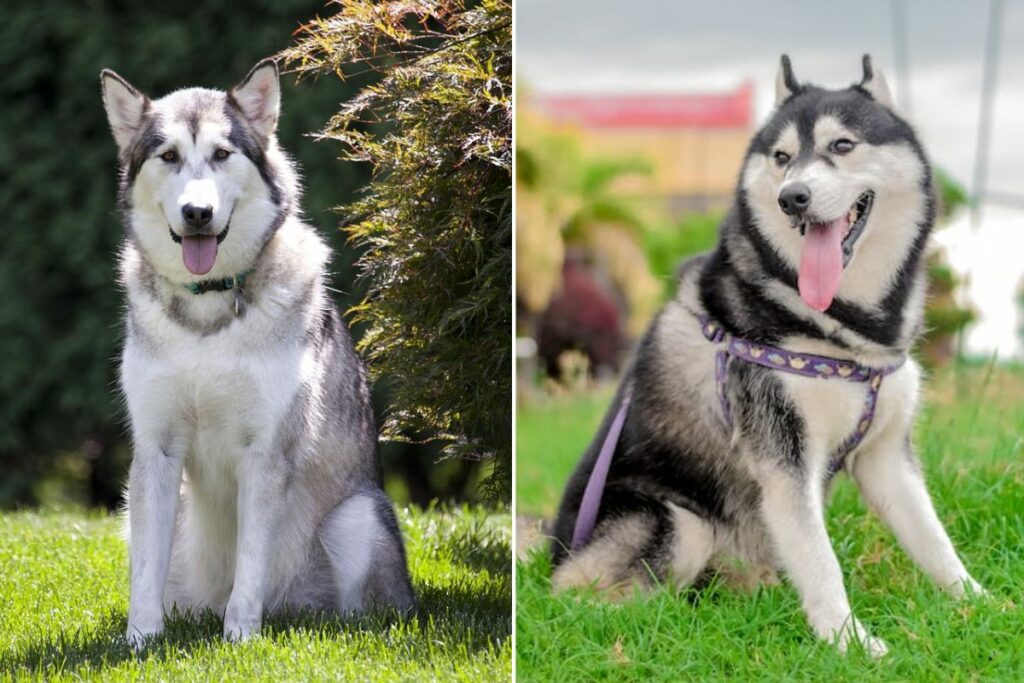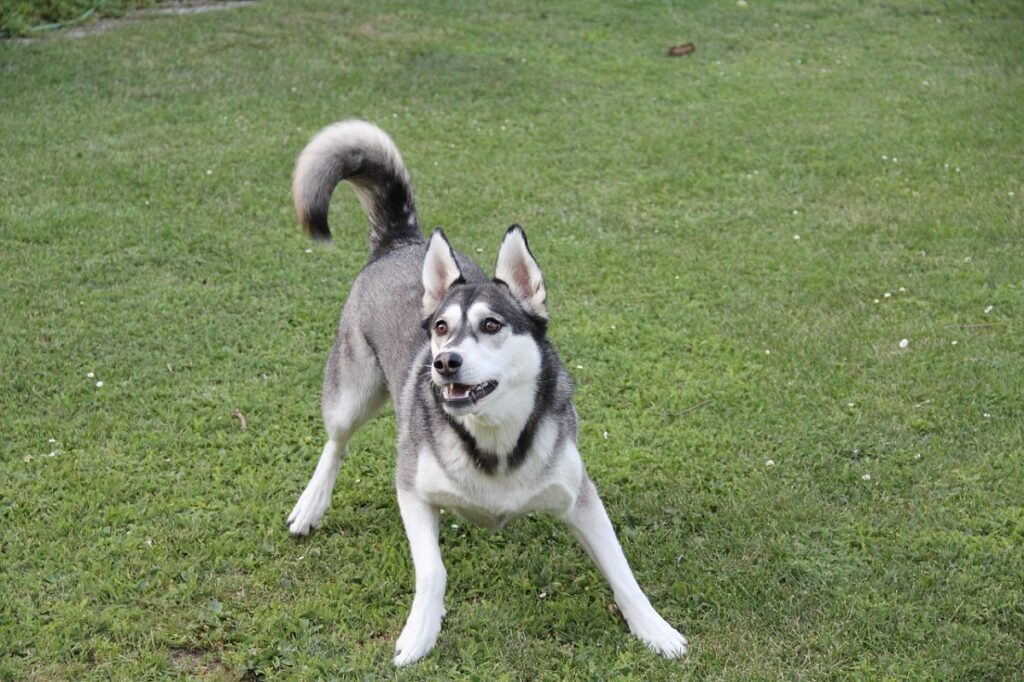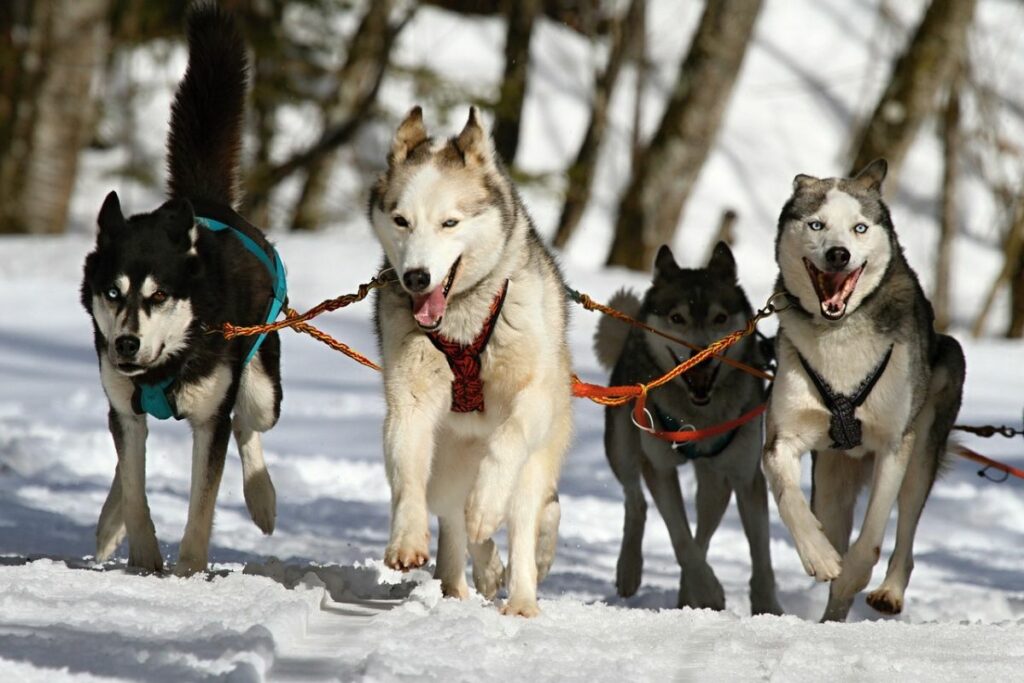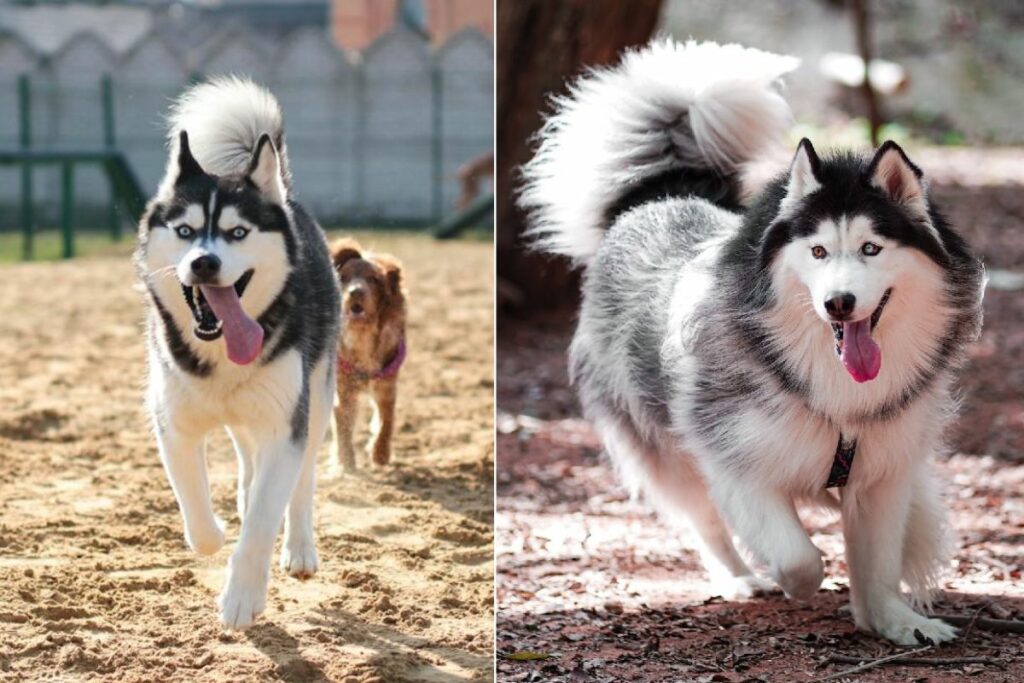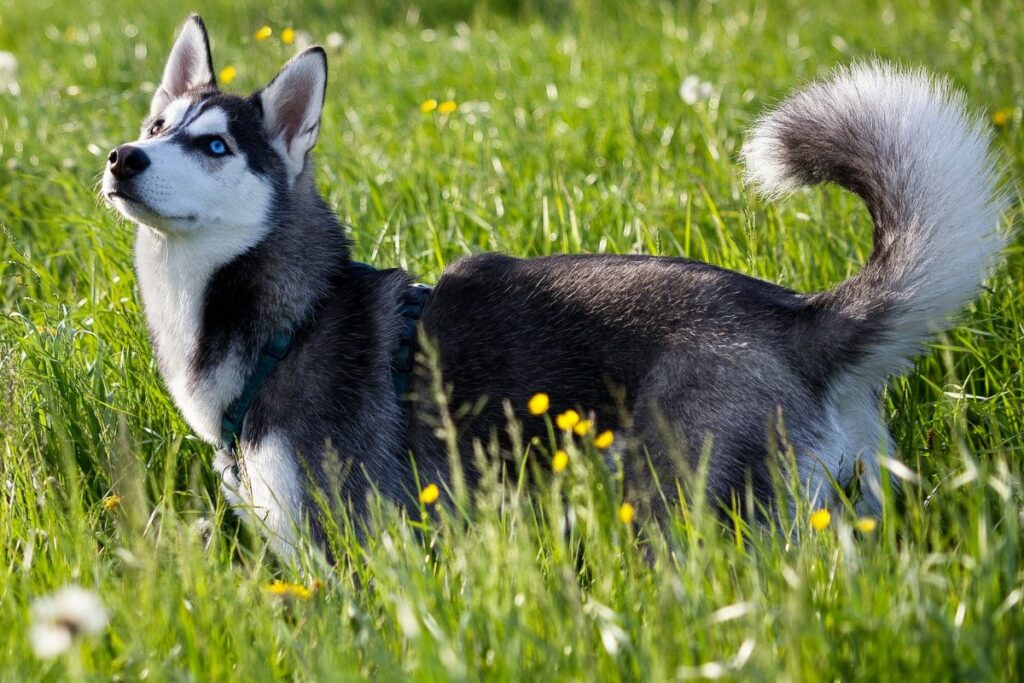The Alaskan Malamute and Siberian Husky, often mistaken for twins, are distinct breeds with fascinating histories. Both hail from snowy landscapes, pulling sleds and charming with wolf-like appearances. But beneath the surface lie key differences. Size, strength, and temperament set them apart, influencing their suitability for various lifestyles. This exploration delves into the nuances of Malamute versus Husky, guiding potential owners toward the right furry companion for their adventures. Which breed reigns supreme for you? Let’s uncover the answer.
Alaskan malamutes and Siberian huskies are beautiful, strong, and weatherproof arctic working dogs that have helped people survive in treacherously cold climates. They share some characteristics, but Mal dogs are larger “freighters” that carry heavy loads on sleds for long distances at a steady pace.
Huskies are smaller sprinters who make quick trips with lighter loads of supplies. There’s also an Alaskan Husky.
Their breed histories are different in that the Siberian husky was bred in Northern Asia/Siberia and brought to Nome, Alaska. The Alaskan Mal is believed to have descended from wolf dogs that lived with an Inuit tribe called Mahlemuts, the first travelers to cross the Bering Strait. They settled in northwestern Alaska over 4,000 years ago.
Let’s take a look at the similarities and differences between the two dog breeds and what they were bred to do.
How to Differentiate Alaskan Malamute vs Husky
Mals are a bit taller and heavier than huskies. Their appearances are slightly different as far as coat, color of coat, and eye color. Some health issues overlap, and others are individual to each. They have different personalities, but both enjoy running and need exercise and mental stimulation.
Height
Alaskan malamute is 23-25 inches tall
Siberian husky is 20-23.5 inches tall
Weight
Alaskan malamute weighs 75 pounds-85 pounds (males weigh 85, females are typically smaller)
Siberian husky generally weighs 35 pounds-60 pounds (males weigh 45-60 pounds, females are typically smaller)
Appearance
Alaskan malamutes are muscular. They have prick ears, and Malamutes tend to have brown eyes. They have a black or gray mask. The American Kennel Club (AKC) describes the Malamute’s full, unmarked faces as “topped by heart-shaped ‘caps’ on their heads.”
Siberian Huskies are also muscular. They can have two brown eyes or blue eyes or one brown eye and one blue eye. Markings are piebald (spotted or multi-colored) or saddle-back (light fur with black on the back).
Their prick ears are pointed straight upward. The AKC says that many huskies’ faces have markings that resemble white masks. The eye coloring is a big difference between the two.
There are many types of huskies and a bunch of types of Alaskan dog breeds.
Coat and color
The Alaskan malamute has a medium-length, thick double coat in the following coloring: gray and white, black and white, red and white, seal and white, silver and white, white, sable and white, blue and white, or agouti and white.
They descended from the original wolf dogs, and the agouti color is very dark and wild-looking, like a wolf’s coat. Malamutes should be brushed daily to prevent mats.
The Siberian husky has a medium-length, double coat in agouti and white, black and white, gray and white, red and white, sable and white, brown and white, black, tan, and white, or black. They should be brushed weekly.
The malamute has longer hair than the Siberian husky. Both have white underbellies. Siberian huskies’ thick tails fall down, and Malamutes’ bushier tails curl over their back like a “feathered plume.”
Both dog breeds shed their entire undercoat (“blowing the coat”) twice a year. It takes shedding to a new and horrifying level, and it’s a mess. Frequent brushings will help expedite the process.
Health
The Alaskan malamute lives 10-14 years. Some health issues they are predisposed to include hypothyroidism, elbow dysplasia and hip dysplasia, diabetes, bloat, progressive retinal atrophy, hemophilia, anal gland problems, sebaceous cysts, skin infections, dwarfism, day blindness, and heart disease.
Mals are also prone to inherited polyneuropathy (resulting in nerve pain), thrombopathia (a platelet disorder), and von Willebrand’s disease (a bleeding disorder).
Siberians live 12-14 years. Some health problems to be aware of are cataracts and other eye issues, hypothyroidism, hip issues, and skin issues. Huskies have fewer health issues than Malamutes.
Similarities of Alaskan Malamute vs. Siberian Husky
Husky vs. Mal: Let’s take a look at personalities, sledding obsessions, and their passion for running.
Temperament and Personality
The Alaskan malamute is energetic, loyal, affectionate, playful, intelligent, stubborn, calm, very trainable, protective, gentle, and friendly. Sometimes, they act aloof, but they love children.
They need to exercise because they’re bred to be working dogs. They have a high prey drive. Mal’s may not be good with same-sex dogs. Don’t let them get bored, or they’ll start digging up the yard.
The Husky is affectionate, nimble, intelligent, friendly, loyal, energetic, good with kids and dogs, playful, and they need mental stimulation and exercise. They are wonderful companions but also have a high prey drive.
Both Huskies and Alaskan malamutes dislike being alone. Both breeds are pack animals and accustomed to being with other dogs and people, so they do well in close-knit packs.
Both Built for Sledding
The Siberian Husky breed and the Alaskan malamute breed were both bred for sledding. The Husky was bred to run faster while hauling light loads on sleds going shorter distances, and the Malamute goes longer distances at slower speeds with heavier loads. Did you know that there are 11 other sled dog breeds in addition to these two famous breeds?
Love for Running
Malamutes love to run. It’s in their DNA. They can run 10 miles in cold climates, but Malamutes can overheat, so don’t let them run a lot unless it’s very cold outdoors. Mals also enjoy hikes and going swimming. Bonus points if you let them carry a pack. They really miss their working dog days.
Huskies love to run and need 80 minutes of exercise a day — and would enjoy to be running a lot of that time. If your preference is not to run and you have a fenced-in yard, your Husky can get all the exercise they need by running around in there.
Keep an eye on them because they like to dig and can escape. Many of them enjoy sled races. Sadly, dogs aren’t treated well during the Iditarod.
The two breeds need their exercise because otherwise, they will develop bad habits like chewing and digging.
History in Harsh Climates: Alaskan Malamute vs Husky
Both the Alaskan malamute and the Husky work in harsh and frigid weather. They need their thick double coats to keep their bodies warm up in the northern regions. Their people were very dependent on them to survive in those miserable elements.
When the semi-Nomadi Chukchi people had to migrate to Alaska because of climate conditions ruining their hunting prospects in Siberia, their huskies carried all their belongings for them on a very long journey in sub-zero temperatures.
In 1925, musher Leonhard Seppala led his Siberian Huskies on a 658-mile journey in just five and half days to deliver a serum to Nome, Alaska and saved many people from an epidemic of diphtheria. The lead dog, Balto, is still famous, and a statue of him is in Central Park in Manhattan. There are also children’s books written about him and the serum run.
FAQ’s
Are Malamutes Better Behaved Than Huskies?
Malamutes are generally perceived to be obedient dogs and act a little more calmly than Huskies. Both Huskies and Mals need to be trained and socialized while young because they are independent working dogs. “Better” is subjective and depends on what a person wants and needs in a pet.
Is an Alaskan Malamute a Good Family Dog?
The Malamute is a great family dog because they are good with children, protective, loyal, loving, playful, and gentle. They do well with owners who have active lifestyles and include them.
How Big Do Alaskan Malamutes Get?
Alaskan malamutes grow to 23-25 inches tall and weigh 75-85 pounds.
Are Malamutes Friendlier Than Huskies?
Huskies are more friendly than Mals. Huskies are such friendly dogs that they can’t be guard dogs. Malamutes are more independent and sometimes aloof, but they are affectionate with their human family.
Final Thoughts
The Siberian Husky and Alaskan Malamute are beautiful, active, smart, loving sled dogs that make nice pets. The two breeds need socializing at an early age (as a puppy, if possible) with other dogs and people, and training at a young age will help them be obedient and well-behaved. The Siberian Husky and Alaskan Mal are very similar but also have differences.
We recommend that future dog owners check Petfinder and breed rescue groups because many pure dog breeds, including both Siberians and mals, are waiting for homes. If you want to go to a breeder, we suggest finding reputable breeders who are concerned with their dogs’ health.
Remember: puppies are crazy energetic, and dogs that are a little older are more calm.
Choosing between an Alaskan Malamute and a Siberian Husky depends entirely on individual needs and lifestyle. While both breeds are stunning and energetic, Malamutes are significantly larger and more powerful, requiring a more experienced handler and broader space. Huskies are known for their independence and higher prey drive, demanding secure containment. If you seek a devoted gentle giant prepared for heavy work, a Malamute might be the fit. If a slightly smaller, quicker, and more independent sledding companion appeals, a Husky could be your perfect match. Careful research and honest self-assessment are crucial for a harmonious partnership with either breed.


